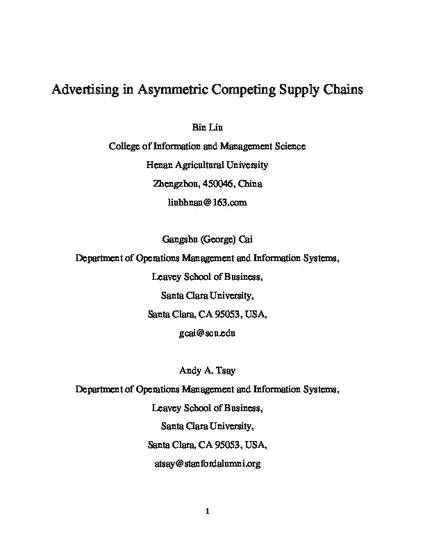
Advertising is a crucial tool for demand creation and market expansion. When a manufacturer uses a retailer as a channel for reaching end customers, the advertising strategy takes on an additional dimension: which party will perform the advertising to end customers. Cost sharing (“co-operative advertising”) arrangements proliferate the option by decoupling the execution of the advertising from its funding. We examine the efficacy of cost sharing in a model of two competing manufacturer–retailer supply chains who sell partially substitutable products that may differ in market size. Some counterintuitive findings suggest that the firms performing the advertising would rather bear the costs entirely if this protects their unit profit margin. We also evaluate the implications of advertising strategy for overall supply chain efficiency and consumer welfare.

This is the peer reviewed version of the following article: Liu, B., Cai, G. (George), & Tsay, A. A. (2014). Advertising in Asymmetric Competing Supply Chains. Production and Operations Management, 23(11), 1845–1858. , which has been published in final form at https://doi.org/10.1111/poms.12090. This article may be used for non-commercial purposes in accordance With Wiley Terms and Conditions for self-archiving.